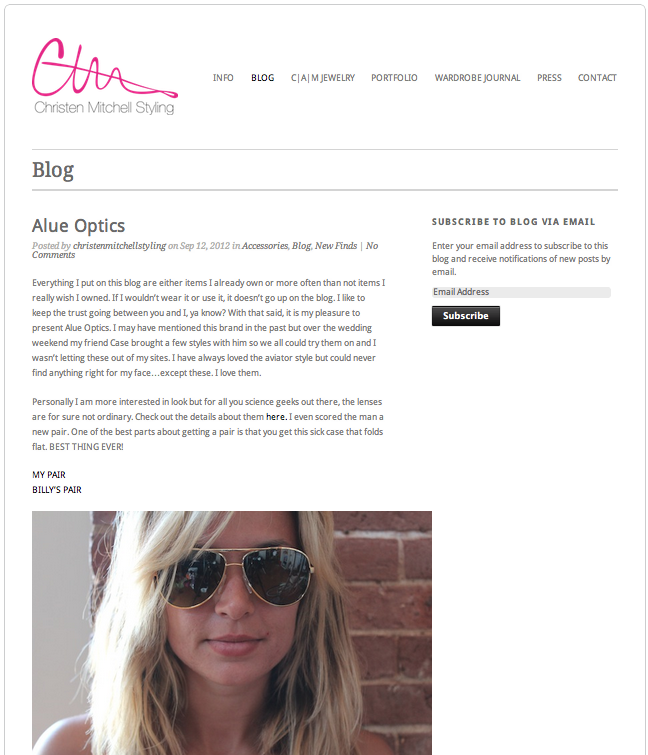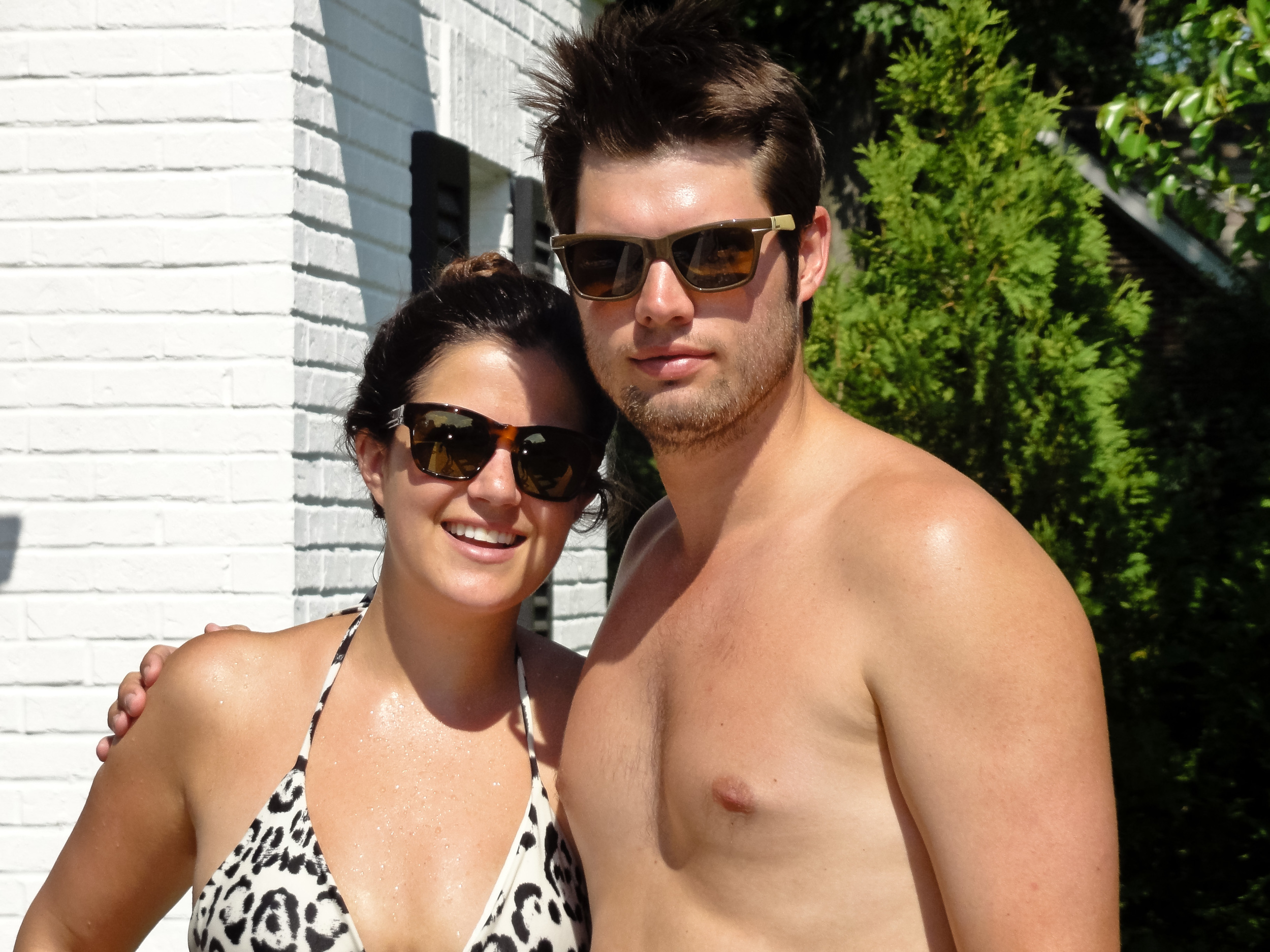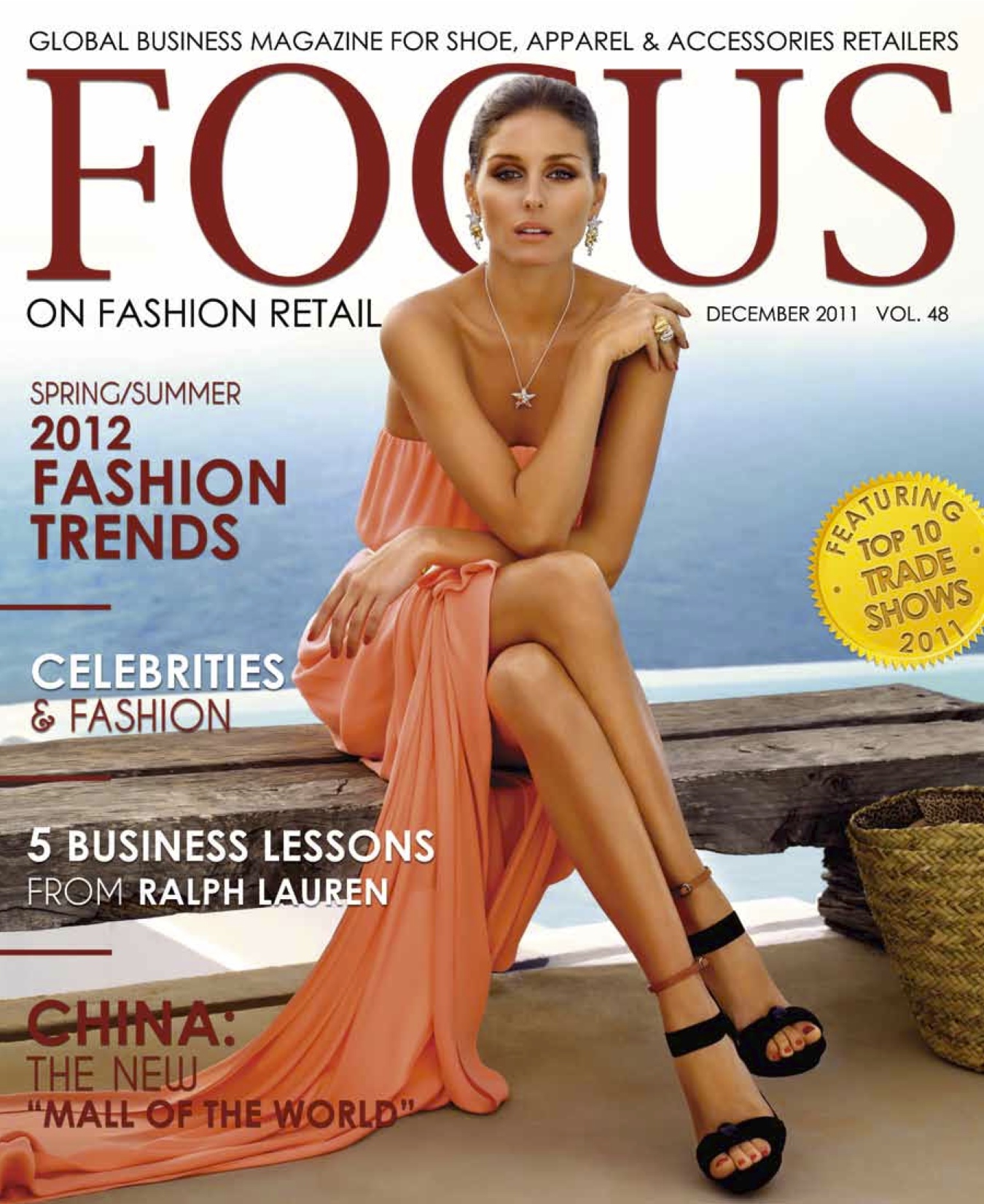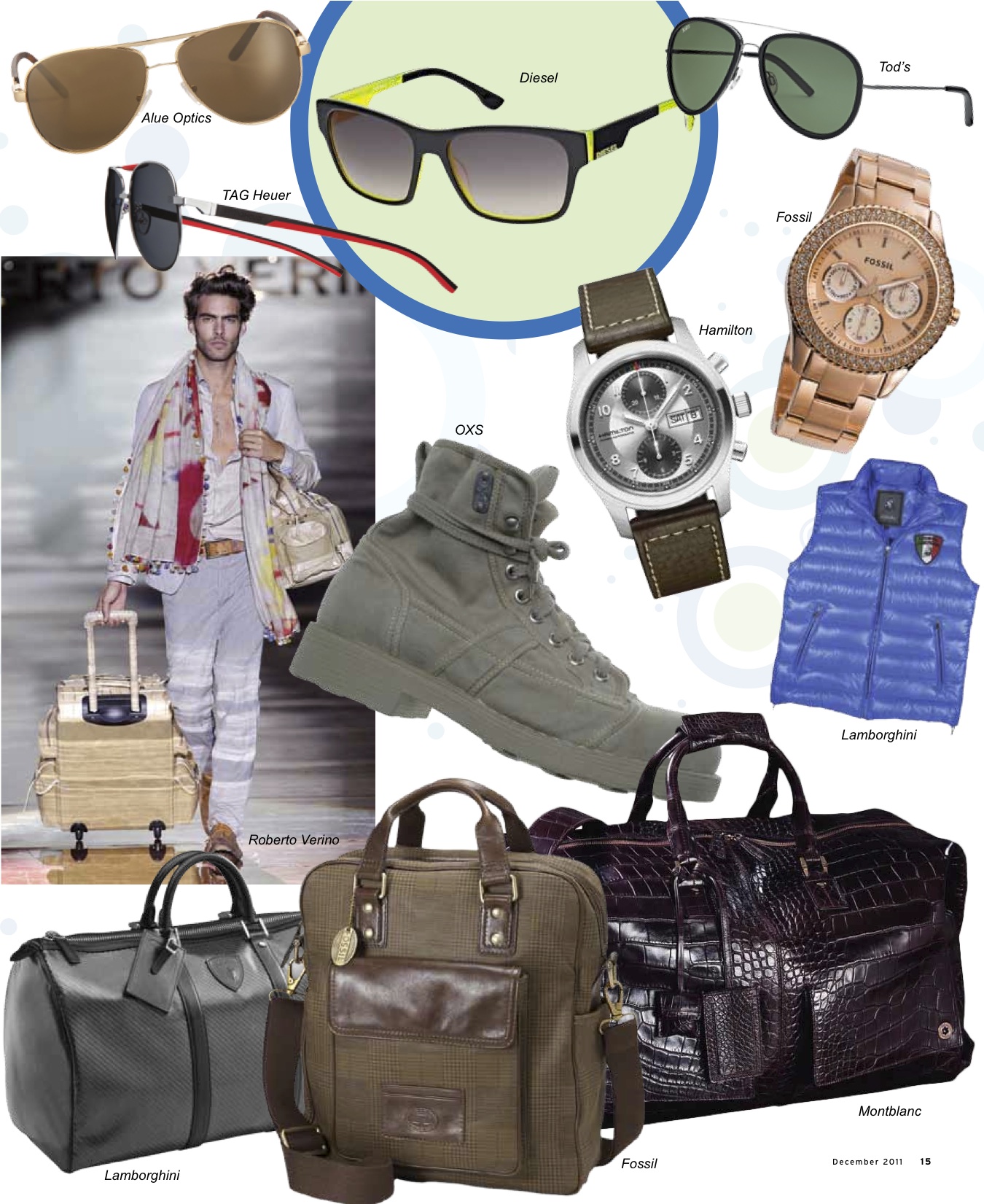Our friend and amazing photographer, Sophie Elgort, was featured on the pilot of Look TV's new series A Stylish Life. Have a watch and keep an eye out for the Alue Eight in Polished Gold!
Nik is featured in the Financial Times Suits and the City style blog wearing the Alue One in Tawny Tort. Check out the Financial Times piece here!
NBA style icon, Russell Westbrook, is featured on the cover of the ESPN the Magazine's Photo Issue wearing the Alue Eight in Polished Gold. The 24 year Oklahoma City point guard takes his looks very seriously and as you can see he looks great in the Alue aviator! Check out the uncropped ESPN picture as well!
Check out the ESPN The Magazine behind the scenes video of Russell Westbrook wearing the Alue Eight glasses in Polished Gold from 1:03 - 1:13! Here are a couple stills from the video.
Here is an excerpt from Nurse Bridgid's article "Vision Loss: We are all at a higher risk than we think." For the complete article click here. "I have had some questions lately related to eye damage from sun, and reflections from ice/snow, and people wondering if that can damage your eyes? YES! Sun glare is a huge danger for our eyes, which is why it is really important to protect them, but there are also some everyday risks that I don’t think most people are aware of that can cause visual damage. If you are a skier/snowboarder, sailor, hiker….anything outdoorsy, where you might be at risk for sun glare, I want to tell you about the sunglasses that you NEED to protect those peepers (and why they are superior). And if you are at risk, for other reasons (perhaps due to your work environment) some tips on how to prevent eye damage and protect your eyes at work.
How does vision work?
The eye is a very fascinating organ, and it always amazes me how it works. There is the cornea, which is the protective covering over the front of the eye (which is clear and gooey), then there is the lens, which helps to focus light rays towards the retina (the first real filter). The big black center of the eye is the pupil, and that determines how much light is allowed into the eye at one time (gets bigger and smaller depending on a lot of things, but usually the amount of light present is a huge factor). There is the Iris that surrounds the pupil, and that is the colored part of our eyes (that’s what makes the men swoon, ladies, always the iris!) At the very back of your eyeball is a nerve tissue called the retina, and that is what senses light, and sends impulses (through a nerve called the optic nerve) directly to your brain. There is a small part of the retina, called the macula, which helps us to see fine details, through having super light sensitivity (this can be difficult in bright sunlight without the proper protection). All of these areas of the eye, work together to make our vision what it is. Any damage to any one part of your eyes (or the part of you brain that sense your optic nerves), can drastically change your vision. So, protecting our eyes is really crucial.
What damages eyes?
Most people know about UV-A and UV-B, but did you know about how much damage can be caused by UV-C and Blue light? Ultraviolet light (UV-A, UV-B, and UV-C which are denoted in nanometers, or nm) cannot be seen by the human eye, but they will definitely cause visual damage, over time, with exposure. UV-C (180-290 nm) is the lowest range of Ultraviolet light (on the light spectrum) and excessive, repeated exposure to it, causes damage to our cornea and lens, and is usually present in sparks or any source of created electricity (visualizing direct bright light). Repeated exposure to UV-B (280-315 nm) (which is found in nature and indoors as well) can cause damage to the lens and create something called “welders eye” (AKA snow blindness, flash blindness, corneal burns); when you are exposed to high levels of UV light, and it can occur hours after exposure, you feel like your eyes are burning or itching with sand in them and they become quite uncomfortable and watery. UV-A (315-380 nm) which is the highest wavelength (which is found out in nature from the sun) can also cause snow blindness (“welders eye”) with excessive and repeated exposure. Now, Blue light (380-500 nm), which is present in sunlight, as well as in offices from some lighting and computer screens, causes direct damage to the retina. Many sunglasses do not have full UV-A, UV-B, UV-C, and Blue light protection, which puts you at risk, without even knowing it....."
For more visit nursebridgid.com!
Alue is featured on Christen Mitchell Styling. Thanks Christen for the great write up!

Alue is featured on Things That Sparkle. Thanks Alex for the nice write up and for the pictures of friends modeling the Alue Two Plus and Six over the weekend!

Alue is featured on www.accessoriesmagazine.com.
















